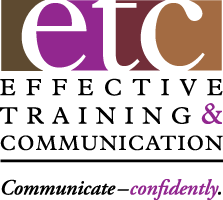What you do with audience questions has a critical impact on your results, often more than the overall content itself. I’m pleased with the positive reader reaction to previous articles that discussed several effective strategies for handling those questions – hold them until the end, invite them anytime or the two hybrid strategies described in detail last month.
So … someone asks a question. Now what do you do? Here are some Best Practices to help you survive and thrive during the Q&A.
- Look directly at the questioner and listen intently for the concept or main idea behind the question. This helps you deal with the actual question, not the first few words. Wait patiently until the person finishes.
- Don’t jump in with your answer. Make sure you know what the question is all about. If you’re not sure, ask for clarification.
- Don’t thank them for the question or indicate, “That’s a good question.” These contrived attempts at courtesy don’t accomplish anything except taking time away from your answers. If it was that good a question, you should have answered it during your presentation.
- Do break visually with the person and look at someone else. This avoids the appearance of a one-to-one dialogue and suggests to the audience that the question and your answer have value for all of them.
- Don’t say, “The question is…” Simply repeat it if it’s short or simple or begin the answer with the content of the question. For example, if the question is ‘What’s the ROI of this project?’ begin your answer with ‘The ROI of this project is … ‘.
- With longer or more complex questions, rephrase them. You can also gently take some of the ‘zing’ out of ‘zinger’ questions, but don’t try to turn a negative question into a positive one.
- Pause for a moment to collect your thoughts. Harness the power of silence – it helps you look like you’re actually thinking.
- Answer as briefly as possible. If the questioner wants more details, let him or her ask for more. Since you anticipated the FAQs and prepared concise answers for them, you’ll be ready for that follow up or drill down question.
- Don’t ask, “Did I answer your question?” Why imply possible incompetence? If your answer didn’t satisfy the questioner, it’s up to him or her to say so and re-frame the question.
- If you don’t know the answer, say so, but indicate you’ll get back to the questioner with it. As alternatives to saying ‘I don’t know …’, consider ‘I’m not sure …’, ‘I don’t have that information with me … ‘or ‘I don’t remember … ‘. These phrases are less likely to take away from your credibility that you worked so hard to earn during your presentation.
- If you’re taking questions at or near the end, manage your time and give the audience a heads-up that there’s time for one or two more. This courteous tactic can encourage the audience to rethink whether they want to ask another question.
The Q&A section of your Workplace Presenter Tool Kit should be full of useful strategies and tactics for when to take questions and what to say – and not say – in answering them. With enough focused planning, you can anticipate 90% of the questions 90% of the audience will ask 90% of the time and craft appropriate answers. And that ‘90%’ should be good enough for at least an ‘A-‘, if not an ‘A’, depending on the curve.
Now … you’re ready to survive and thrive the Q&A. Any questions?
